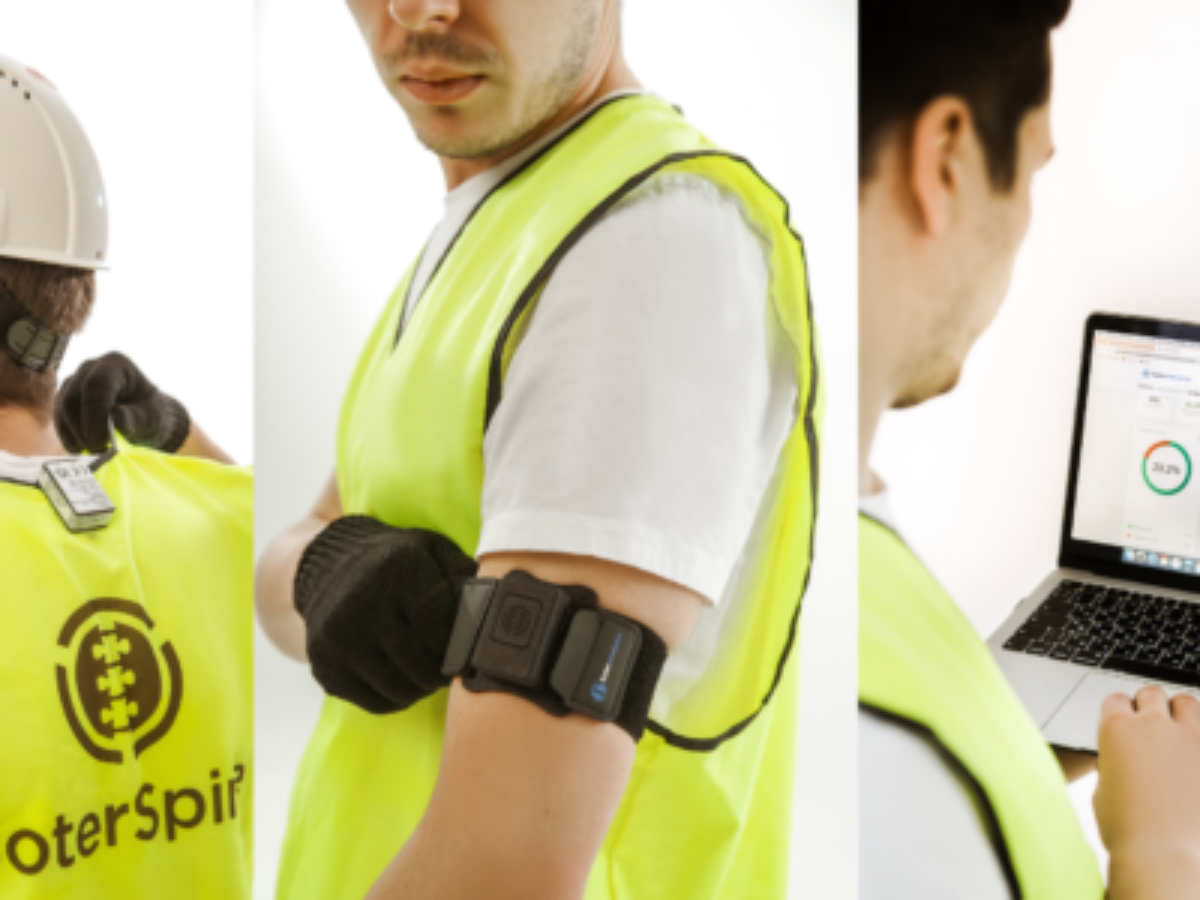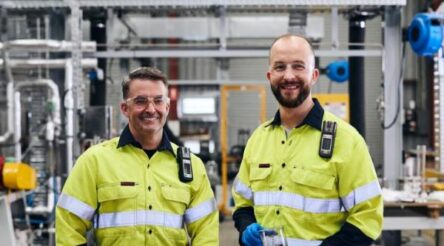Is Traditional Injury Prevention Training a Thing of the Past?

ADVERTISING FEATURE
AI-driven wearables facilitate affordable injury prevention that delivers real results and sustainable behavioural change through the power of predictive analytics. By Anina-Marie Warrener.
Workplace back and shoulder injuries are extremely common with as many as 3% of workers suffering each year. These injuries often result in costly insurance claims. On a global level, the annual cost of workplace back and shoulder injuries is astronomical: more than $50 billion dollars in the US and over $80 billion dollars in the UK.
Companies that actively take steps to reduce risks can save on the costs associated and are more likely to maintain long-term, positive relationships with their insurance providers. As a result, lots of money, time and effort is invested every year into reducing injuries in the workplace. Traditionally this is done through manual handling training, one-on-one coaching or workplace redesign.
Are Traditional Risk Mitigation Methods Effective?
Manual handling training is not only costly (between $150 – $1,000 per worker) but it also leads to a loss in productivity as employees have to spend time away from the job in a classroom. Research has shown that traditional manual handling training is not an effective means of preventing workplace injuries and does not create any sustainable behavioural change in the long-term.
One-on-one coaching is another costly risk mitigation method (as much as $1,500 per worker) and whilst it may be effective in small organisations, it is not scalable as the coach can only be in one place at a time.
Workplace redesigns can cost more than $10,000. But without proper data analytics, these redesigns are often based on short-term, observational data which means that they are likely ineffective at addressing the real underlying risk factors and therefore they usually do not mitigate injury risk.
The Shift to Technology
AI-driven wearable technology is shaking things up seeing organisations around the world weaving wearable technology into their ergonomic processes. Solutions to assist workers to learn more about their movements, understand them, and help reduce their risk of injury – permanently.
These advances in ergonomic training using sensors and biofeedback are forging a step change in manual handling injury reduction. Leveraging the power of artificial intelligence (AI) and machine learning (ML), coaching workers to self-correct their movements in real-time and avoid ergonomic injuries, is stimulating an engaging personalised pathway to behavioural change.
How Does It Work?
Artificial Intelligence (AI) collects and evaluates big data to identify patterns. AI can learn from human behaviour through a process referred to as ‘machine learning’ to improve analysis. AI analysis and machine learning improves with continuous use and repetition. This allows for better data analytics and the ability to make predictions about behaviour based on input.
The AI can easily identify the risks of injury from particular movements due to contributing factors such as fatigue, stress, pre-existing injury or distraction. Wearable technology devices use machine learning based on algorithms to detect the quality of movements performed. Even movements that are completed with correct posture may deteriorate in quality over a duration of time and these wearables are smart enough to identify such changes. The safety of any given movement can be assessed against a wide range of characteristics including velocity, jerkiness and bend angle.
The implementation of this new technology can lead to a much more proactive approach to workplace injury risk, preventing injuries before they occur and reducing the number of injury-related insurance claims.
Case Study
OccuCare, a leading provider of occupational health services in the US, recently implemented wearable safety devices with one of their key clients. They selected SoterCoach, a small, lightweight 2x3cm wearable device from Soter Analytics designed to monitor the behaviour of workers and alert of any hazardous movements that could lead to back or shoulder injuries.
The 10-day SoterCoach program solution is twofold. Firstly, the sensor worn by the worker increases their awareness of any hazardous movements and coaches them on how to avoid these, reducing the risk of injury. Secondly, the dashboard data enables management to spot trends and proactively improve the work environment.
OccuCare’s client faced a sizable challenge. Their injury rates were extremely high, leading to significant negative productivity and turnover outcomes. SoterCoach enabled the identification of specific hazardous movements, helping them to fix the problem.
Insights from the data analytics concluded that the client had a risk exposure of more than three times the industry average. Using this data, OccuCare was able to work with their client to apply an effective and sustainable improvement strategy. The personalised SoterCoach app facilitated engaging, on-the-job manual handling training to develop long-term, sustainable behavioural change.
The Future of Injury and Loss Prevention
The future of preventing and reducing injuries in the workplace is data driven. The advent of new technology is the driving force behind a revolution that could see a significant reduction in costs as a result of workplace back and shoulder injuries. The technology has the potential to facilitate more than just a reactive approach; forging a path for fully integrated end-to-end ergonomic solutions.
Data is fast becoming one of the most important corporate assets especially as it has the power to generate predictive analytics. With predictive safety modelling, it is possible to anticipate potential safety hazards through the interpretation of data. This is a powerful lens that can turn a usually reactive approach to workplace safety into a strong proactive one.
As of 2020, only 12% of companies in industries like manufacturing and construction have adopted technologies that enable predictive analytics. Thus, there is significant potential for improving employee safety and reducing insurance claims as a result of workplace injuries by increasing the uptake of new technology in these high-risk industries.
Subscribe to our free @AuManufacturing newsletter here.
Topics Manufacturing News Technology
@aumanufacturing Sections
Analysis and Commentary Awards Defence Manufacturing News Podcast Technology Videos










